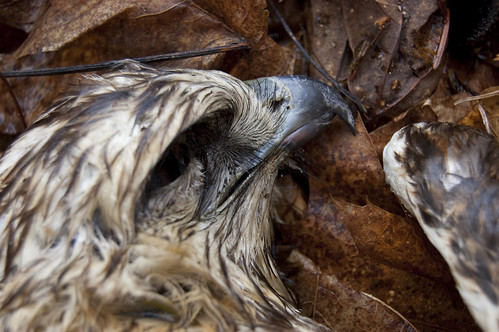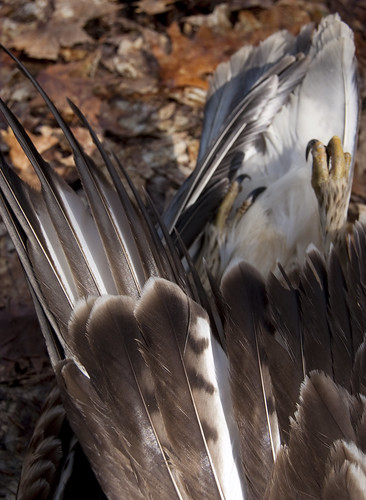In the United States, it is illegal to possess the feathers and remains of almost any species of bird (save for non-native and game species), especially those of a bird of prey, without certain permits. We did the legal and respectful thing: return the hawk's body to nature, where it belonged, from the start.
It took us a while to identify what species of hawk this individual was, but Steph and I finally decided that it was a juvenile rough-legged hawk.
We returned a few weeks later and were somewhat surprised to find the body was still relatively unchanged. The hawk's yellow feet and legs had turned a grayish color, and its eyes were gone, but other than that and a few feathers that had been ripped out and deposited nearby, it looked the same as it had when we'd left it there.
In this state of early decay, it appeared more peaceful to me. I'd been unhappy with the photographs I'd taken earlier of the hawk's head. Now, however, there was something far more beautiful and dignified about it.

I look forward to watching the hawk slowly return to the earth over the course of the next few months. Hopefully, it will remain undiscovered by humans. Its feathers will be woven into nests, keeping eggs warm, and its flesh will be eaten by the very insects that are preyed upon by birds. Perhaps the mice that gnaw on its bones will end up in the belly of a hawk.






No comments:
Post a Comment